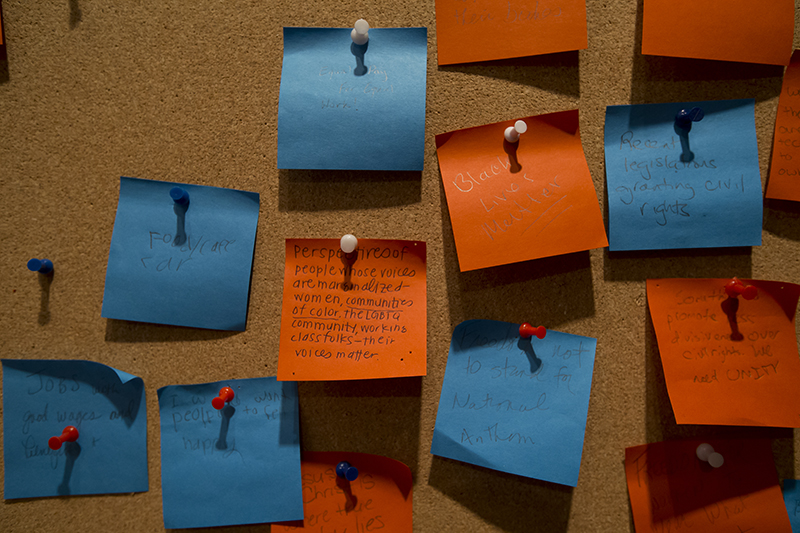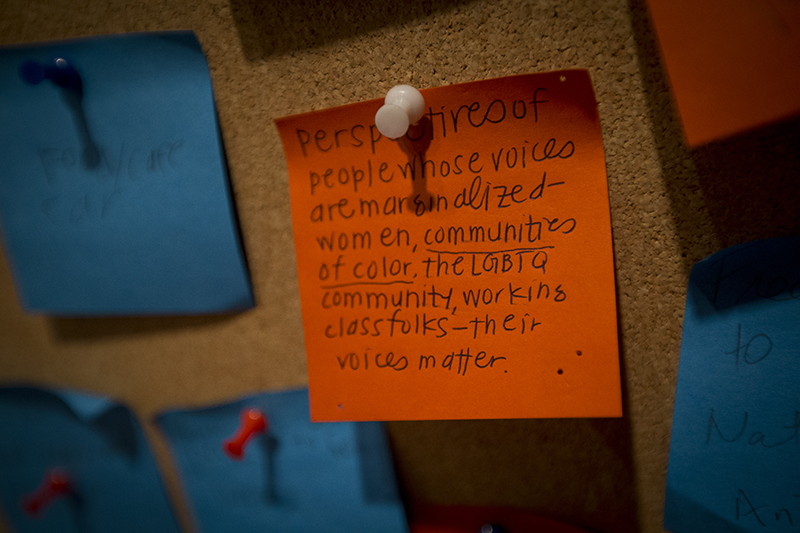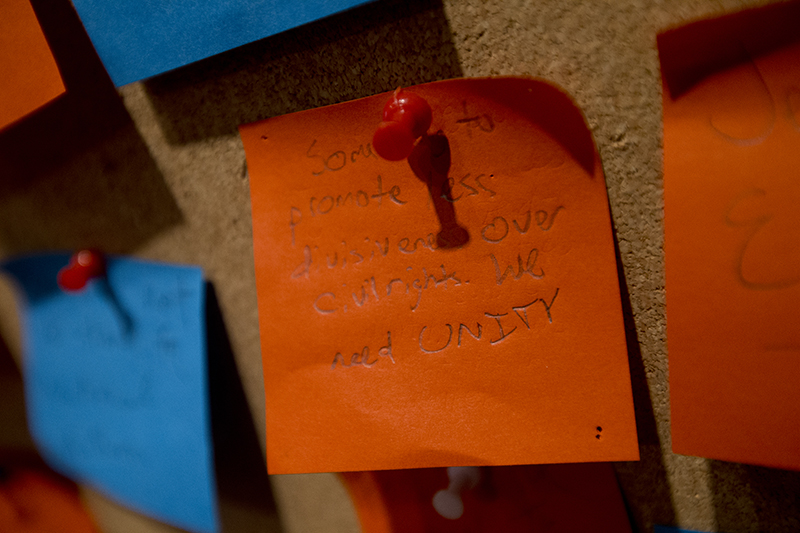The Freedom Train 1947-1949 exhibition at the Rosenbach is arranged to encourage visitors to walk a narrow path bordered by panels set in a zig-zag pattern, mimicking the original Freedom Train experience of traveling through train cars mounted with diagonal displays. Our “train” conducts visitors through the triumphs and challenges of the original exhibit, and when visitors reach the final station of the exhibition, they face a sign that asks “What would you include on a 2016 Freedom Train?”
After a season of political events and historic speeches, our visitors had many ideas to tack onto our bulletin board.

The 1947 Freedom Train celebrated some milestones in citizens’ rights such as the 19th Amendment, and the American Heritage Foundation provided materials for cities to create inclusive events in honor of religious organizations, labor unions, veterans, and so forth. But the fact remains that many American citizens felt left out of the vision of democracy; namely, critics such as celebrated poet Langston Hughes and the NAACP president Walter White expressed concerns about an exhibition celebrating freedom in an era that still practiced restrictive Jim Crow laws.
In 2016, many visitors left sticky notes that expressed a desire to see even more inclusivity in a future Freedom Train. Some of these notes suggested a need for greater representation of certain groups while others referenced slogans or recent political movements that may be documented in future histories of our era.
- Equal Pay for Equal Work!
- Hands up Don’t shoot
- Black Lives Matter
- Black Trans Lives Matter
- Trans medical coverage and workplace rights
- Recent legislations granting civil rights
- Freedom not to stand for national anthem
- Freedom for women to wear what they want
- Freedom for women to have control over their bodies
- Perspectives of people whose voices are marginalized—women, communities of color, the LGBTQ community, working class folks—their voices matter.

Other sticky notes listed more general concepts and slogans, which may be suggestions for a future Freedom Train’s mission or simply ideas about what is needed in a narrative of democracy.
- Jobs with good wages and benefits
- I would want people to feel happy
- Jesus Christ is where freedom lies
- We all eventually learn to be tolerant
- What society do we live in, where the people who are sworn to protect us, drive us to fear for our own lives
- Something to promote less divisiveness over civil rights. We need UNITY.

A few visitors took the concept of re-launching a traveling exhibition very seriously, and offered some material suggestions for a future Freedom Train:
- Food café car
- I would love to do a new Freedom Train in 2016 but it could be online so more people could access it.
Freedom Train 1947-1949 is open through November 1. Be sure to catch the exhibition before it leaves this station!
